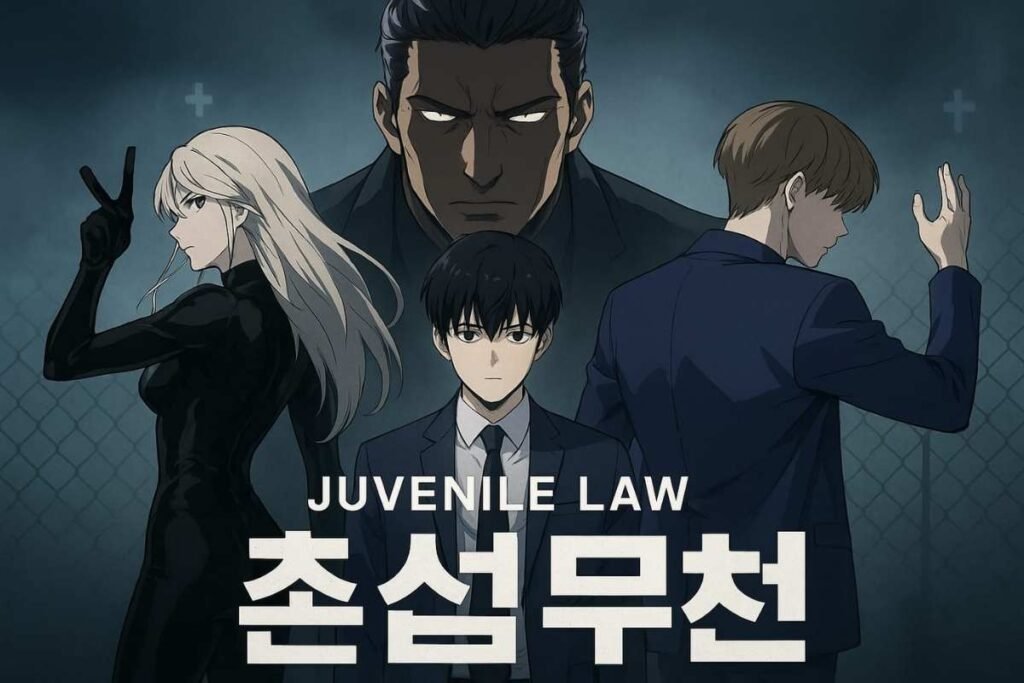When you hear the term juvenile law it can seem confusing at first. Juvenile Law Chapter 1 explains how the legal system treats children differently from adults.
It focuses on protection, guidance and helping minors make better choices. This chapter is about fairness, care and giving young people a chance to learn and grow.
Parents teachers and communities benefit from understanding its rules and principles. By exploring this chapter you will see why it is so important in shaping a supportive legal system.
Definition and Scope of Juvenile Law!

Juvenile Law Chapter 1 defines who is considered a child under the law usually anyone under 18 years old. It clearly separates minors from adults in terms of responsibility and punishment.
The chapter also outlines what types of cases fall under juvenile jurisdiction such as delinquency or neglect. Data from recent reports shows that over 60% of juvenile cases involve minor offenses rather than serious crimes.
Understanding these definitions ensures fairness and proper care. Authorities and guardians rely on this clarity to guide interventions and legal decisions.
Key Principles Behind Juvenile Justice!
The chapter emphasizes rehabilitation as the main goal rather than punishment. Research indicates that children who receive counseling and guidance are 40 to 50% less likely to reoffend.
Courts consider the least restrictive environments for minors aiming to balance public safety with the child development. Rights, privacy and dignity are protected at every stage.
By focusing on education and support the law encourages positive growth. These principles form the backbone of fair and effective juvenile justice systems.
Purpose of Juvenile Law!
The purpose of juvenile law chapter 1 is to guide society in handling children differently from adults. It emphasizes rehabilitation over punishment and aims to support healthy development.
Children are treated with care to prevent long term negative effects. The law also provides safety for the public while respecting children’s rights.
Early intervention and guidance are essential aspects of its purpose. It ensures minors have access to support systems and legal protections.
Rights of Children in Legal Proceedings!
Children under Juvenile Law Chapter 1 have the right to legal representation, privacy and a fair hearing. Studies show that minors who understand their rights are more cooperative and have better outcomes in court.
Authorities are required to protect children from harm or public exposure. The law ensures that all procedures prioritize the child well being.
Guardians and legal representatives play a vital role in safeguarding these rights. This framework builds trust and ensures justice is served without unnecessary punishment.
Responsibilities of Guardians and Authorities!
Parents, guardians and authorities share responsibilities under this chapter. Guardians must provide care, attend hearings and support rehabilitation programs.
Authorities must follow proper procedures, maintain records and ensure children safety. Data indicates that active guardian participation improves rehabilitation success rates by over 30%.
Clear communication between families and legal personnel is essential. These shared responsibilities create a supportive environment for the child throughout the legal process.
Scope and Application!

Juvenile law chapter 1 explains which cases and children fall under the law jurisdiction. It applies to minors involved in criminal activity, neglect or abuse situations.
Authorities follow specific procedures to handle these cases correctly. The law clarifies when courts should intervene and how children should be supported.
Geographic and age limitations are clearly defined to avoid misunderstandings. Knowing the scope ensures legal processes are fair and consistent for all juveniles.
Principles of Juvenile Justice!
This chapter emphasizes the principles guiding juvenile justice which differ from adult law. Rehabilitation, not punishment is the central focus.
Minors are entitled to care guidance and protection while the legal system addresses wrongdoing. Courts aim to use the least restrictive environment suitable for the child.
Decisions prioritize long term development and social reintegration. These principles create a supportive framework for legal proceedings involving juveniles.
Rights of Children Under the Law!
Juvenile law chapter 1 highlights the fundamental rights children have in legal proceedings. Every child has the right to a fair hearing and legal representation.
Privacy and protection from harmful exposure are guaranteed. Children must be treated with respect and dignity at all times.
Authorities must ensure their safety and well being throughout any legal process. Protecting these rights fosters trust and encourages cooperation from minors.
Procedures in Juvenile Cases!
The chapter explains procedures for handling juvenile cases from start to finish. Cases begin with reporting incidents to authorities who assess the child situation.
Investigations are conducted carefully focusing on protection and rehabilitation. Courts follow steps that ensure the child rights are maintained.
Decisions include counseling, supervision or other supportive measures. Procedures are structured to promote fairness while addressing the child needs effectively.
Importance of Early Intervention!
Early intervention is highlighted in Juvenile Law Chapter 1 to prevent minor issues from escalating. Statistics show that children who receive timely counseling or supervision are significantly less likely to repeat offenses.
Programs focusing on education, mentorship and guidance are common tools. Authorities coordinate with schools and communities to provide support.
Families are encouraged to act quickly when issues arise. This proactive approach ensures children receive the help they need before problems worsen.
Challenges in Implementation!

Implementing juvenile law chapter 1 can face challenges in practice. Resource limitations, lack of trained personnel and social barriers may affect outcomes.
Ensuring consistency across different regions requires careful monitoring. Authorities must maintain balance between protection and accountability.
Training programs and clear guidelines help reduce mistakes. Understanding these challenges highlights the need for ongoing support and awareness.
Conclusion
Juvenile law chapter 1 provides a strong foundation for handling legal matters involving children. It defines key terms, outlines principles and establishes clear rights and responsibilities.
The chapter focuses on rehabilitation, safety and fairness in every case. Understanding this law helps guardians, authorities and communities support young individuals effectively.
By following these rules, society ensures children are treated justly while learning and growing responsibly. Awareness of this chapter strengthens both protection and justice.
FAQs
What is juvenile law chapter 1?
It is the first section of juvenile law explaining rules, definitions and principles for minors.
Who does it apply to?
It applies to children under 18 involved in criminal, neglect or abuse situations.
Why is rehabilitation emphasized?
The law focuses on helping children improve rather than punishing them harshly.
Are children entitled to legal representation?
Yes, all children have the right to a fair hearing and a legal advocate.
What role do guardians play?
Guardians guide children, attend hearings and cooperate with authorities.
Why is early intervention important?
It helps prevent minor issues from developing into serious long term problems.




